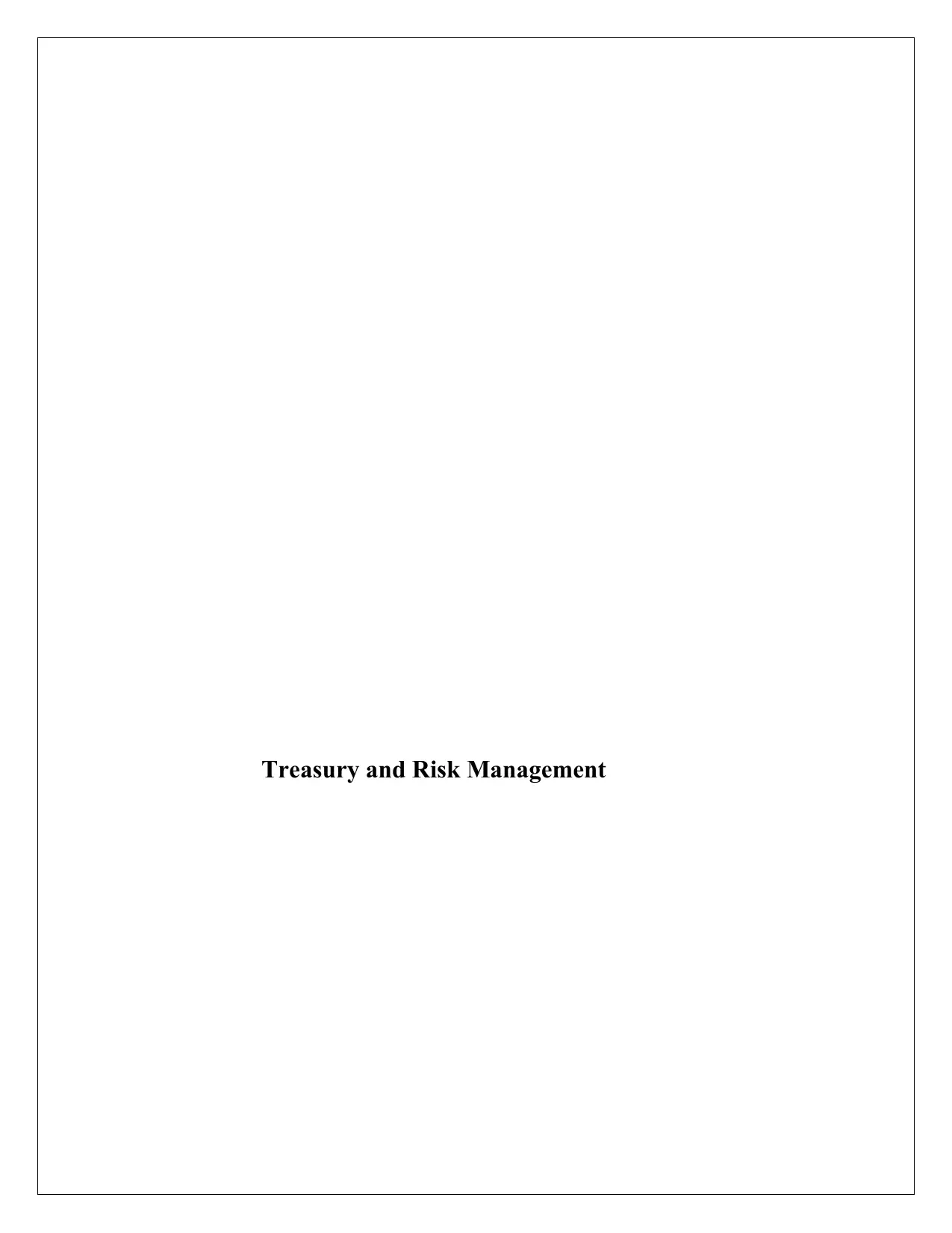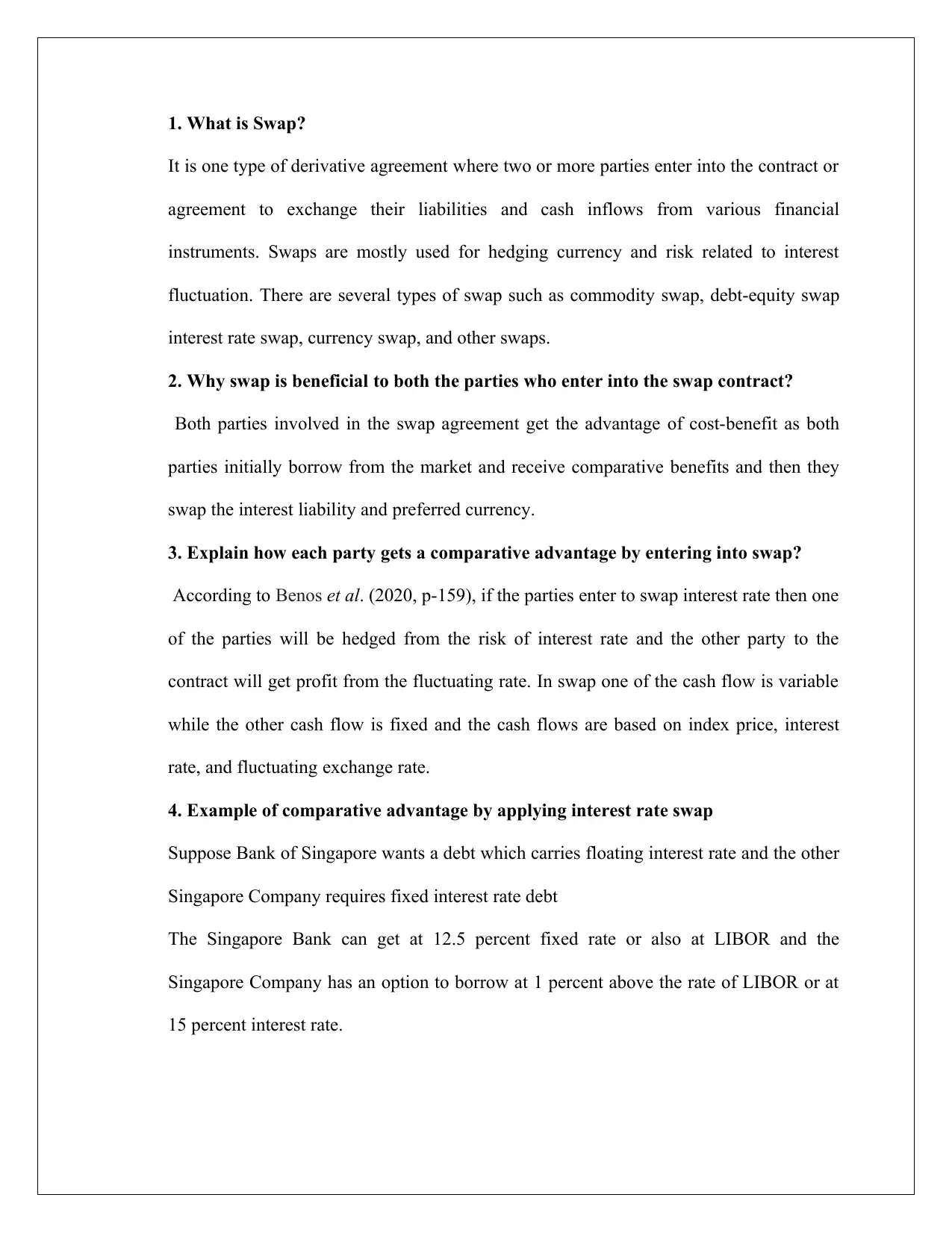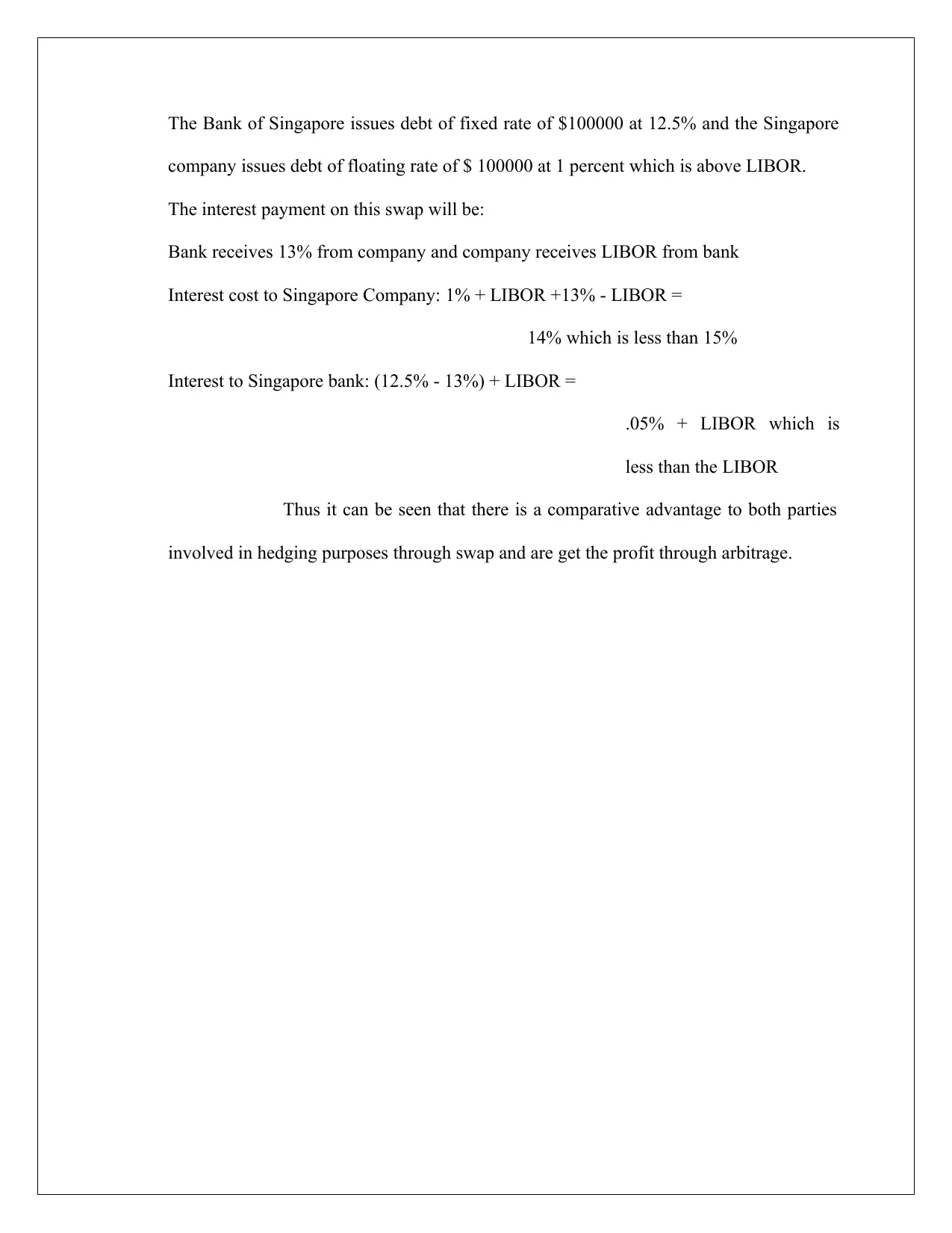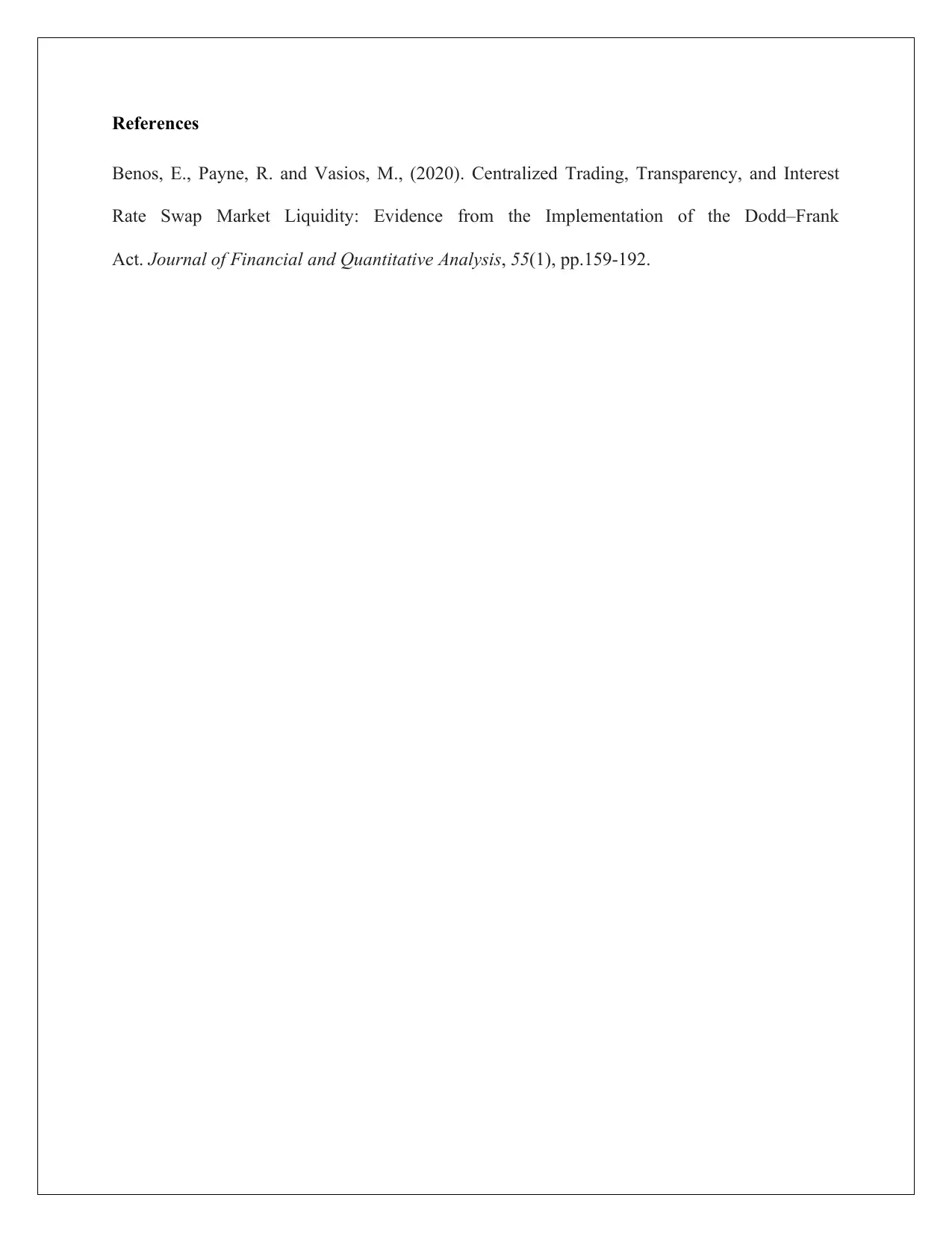Interest Rate Swap and Comparative Advantage Analysis in Finance
VerifiedAdded on 2022/09/27
|4
|483
|16
Homework Assignment
AI Summary
This assignment delves into the concept of interest rate swaps, a financial derivative used to manage risk and exchange cash flows. It explains how swaps function, focusing on interest rate swaps, and highlights the advantages for both parties involved, particularly in hedging against interest rate fluctuations. The assignment provides a detailed example involving the Bank of Singapore and a Singapore company, demonstrating how they can achieve comparative advantages in interest rates through a swap agreement. The analysis includes the calculation of interest payments and illustrates how each party benefits from the arrangement, leading to cost savings and more favorable interest rates. The assignment also references a study by Benos et al. (2020), which supports the analysis of interest rate swap markets and liquidity.
1 out of 4











![[object Object]](/_next/static/media/star-bottom.7253800d.svg)